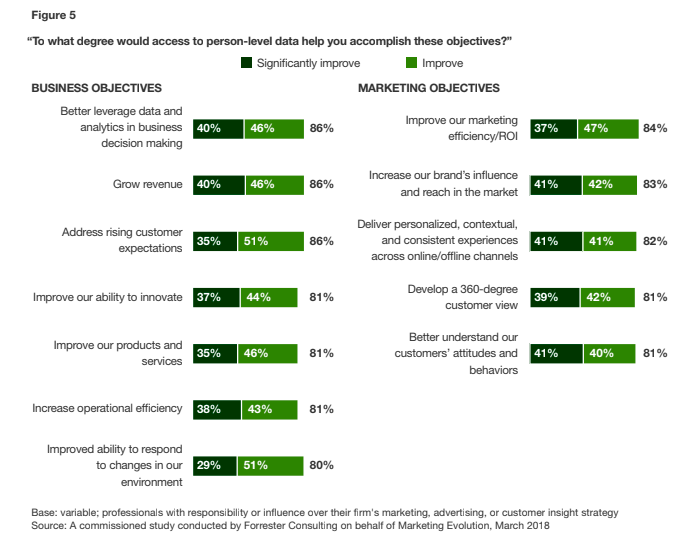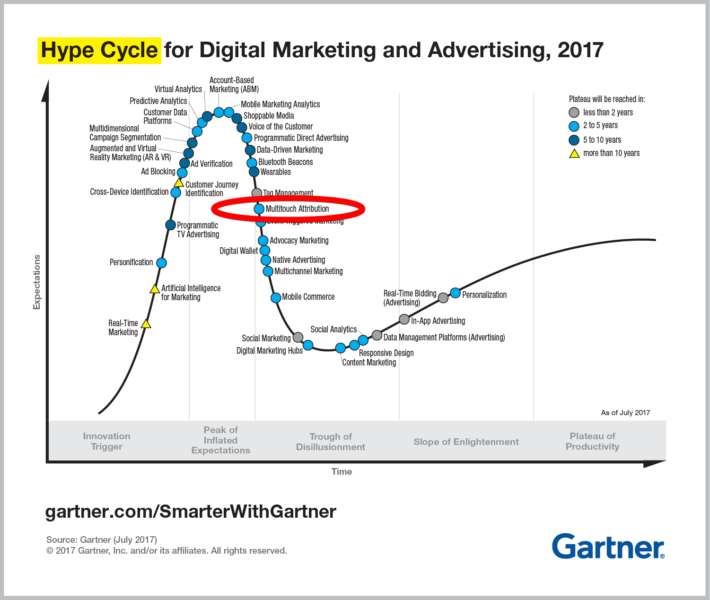Bridging the gap: Creating the perfect customer journey
How to assess your business' needs and adopt tools that provide real-time, person-based insights into your marketing efforts.

Empowered customers expect seamless, real-time, and relevant brand experiences and content across all touchpoints. In this new world of fragmented media and consumer attention, marketers are increasingly relying on data-driven decision-making to help them meet this demand. Additionally, to be successful, marketers must evolve their approach away from backward-looking reports toward forward-looking, prospective decision-making.
It’s no surprise that marketing as an industry has moved away from its traditional processes to make room for a data-driven environment; the opportunity for marketers looking to leverage insights to find a competitive advantage is enormous.
Marketers today have myriad tools that help them recognize what’s working and what’s not — with unprecedented clarity around which marketing channels to allocate their budgets to. We can now better identify these drivers and create a perfect journey for potential customers.
Implementing person-level analytics
New research from Forrester Consulting (and commissioned by my company) reveals marketers are bullish to examine advertising campaigns at the person-level — eighty-four percent of respondents agreed that rising customer expectations will make person-level data a critical capability within five years.

Although marketers have more customer information at their disposal than at any other time, the study found that 71 percent of marketers are hindered by siloed measurement approaches and tools, a costly inefficiency in a wildly competitive marketplace.
The smartest of these instruments answer key questions such as the ideal reach and frequency within and between multiple channels, and which creative and messages are optimal for which audiences. Product advances are allowing for even more granular insights regarding message sequencing, and next-best message decisioning based on multiple audience attributes and different steps of the buying processes. Some solutions even include external and environmental factors such as weather, traffic patterns and more.
Real-time capabilities
What’s more, capabilities within today’s solutions generate insights in such a timely fashion that the nimblest marketers can incorporate those insights into active campaigns to drive massive performance improvements, rather than waiting for weeks or months to see results. This timeliness can save a failing campaign by steering it in another direction and saving the lost dollars the failure would reap.
But while these attribution models have made significant advances in the past few years, and there are numerous tools available from which to choose, many current methods have significant shortfalls. Gartner last year noted that marketers are entering the “Trough of Disillusionment” stage of the hype cycle when it comes to multi-touch attribution. Because of this, many marketing professionals find themselves confounded about who to trust, how to reach decisions, and which direction to turn.

In their research, Forrester found that organizations understand they must master customer data at the person level, but challenges, including disconnected marketing measurement and optimization approaches, inhibit success. Even those organizations that have in the past been analytics powerhouses find themselves facing significant challenges to evolve their companies’ attribution approaches. Inertia from legacy methods has become a snag for some even while better solutions exist.
Many marketers have expressed disappointment and frustration at the solutions that are in use today. Others speak commandingly about the pace of change and innovation. To be sure, notwithstanding the speedy progress and evolution in measurement and attribution over the last decade, many marketers still find their models fail them in essential ways. On the one hand, marketers understand that they must master the science of data-driven decision making. On the other hand, there are measurable risks to relying on the wrong partner.
Savvier marketers will recognize measurement shortfalls and see it as an opportunity to separate themselves from the competition. Leading marketers are quickly adopting unified measurement models. This innovative solution combines the attributes of person-level measurement with the ability to measure traditional channels such as TV. Within this category, there is a significant variance between vendors.
How to move your company forward
Those looking to advocate for change should carefully consider – and rely upon trusted members of their team – to help them assess and deploy new methods. Marketers shouldn’t be deterred by the bumps they may encounter along the way – and there will be some! Ultimately, the measurable performance gains that companies realize will give them a commanding lead in the marketplace.
So how do marketers find their way to these benefits and minimize the challenges? First, you’ll need to develop a clear understanding of your team’s wants, worries, and needs. Ultimately, this up-front work helps guarantee strategic alignment with your company’s mission and will help you reach the goal of increasing your company’s marketing ROI. Suggestions include:
- Start with a view of what marketing may be like in a three to five-year horizon. This will help identify solutions that can speed your company’s progress towards the future rather than shackling you to the past.
- Create a project brief detailing the need, objectives, and a roadmap for implementing an enhanced attribution system. You’ll need to highlight any possible upsides in marketing ROI or impact.
- Ensure senior-level approval to begin the evaluation process.
- Select an executive and non-executive thought-leader from within your company to oversee the project and process; a few good choices for the executive leader are CEO, CFO, CMO; examples of good options for non-executive leaders are heads of Marketing, Analytics, or Media.
- Organize a cross-functional leadership committee comprising representatives from various teams including Analytics, Marketing, and Finance. Make sure representatives from Digital and Traditional media agencies are included as well. This steering committee should have a member who has their eye on potential profit and loss. Meet on a regular basis, as a team, to assess progress, make decisions, and address problems based on the agreed upon plan.
The non-executive champion can lead an effort to review and filter potential attribution partners candidates, identifying the top two to three solutions for the company based on agreed to selection criteria and company goals.
Then, the committee reviews top vendors identified in detail. It will also define roles and responsibilities for the team: who will handle implementation of the optimization decisions, which stakeholders will be required for onboarding, who will be involved in quarterly business reviews with the vendor, etc.
Don’t settle for less than state-of-the-art
When evaluating options, remember that the best of these new attribution solutions answer questions such as reach and optimal frequency within and between multiple marketing channels, and they can also tell you which creative and messages are optimal for which audiences. Recent advances are giving marketing teams even more granular insights concerning message sequencing, and next-best message decisioning for multiple audiences and each stage of their buying processes.
In a world of hyper-fractured media and distracted consumers, those advertisers who rely on data-driven decision making will find a real competitive advantage in the marketplace. These insights, consistently applied to decision making, can lead to profound changes in a company’s business.
The ability to generate insights that can be applied to campaigns in real-time can lead to massive performance improvements today, rather than waiting for weeks or months to see (or not see) results that may (or may not) help. It is only in this way we can bridge the gaps for potential customers and create their perfect journey to us.
Contributing authors are invited to create content for MarTech and are chosen for their expertise and contribution to the search community. Our contributors work under the oversight of the editorial staff and contributions are checked for quality and relevance to our readers. MarTech is owned by Semrush. Contributor was not asked to make any direct or indirect mentions of Semrush. The opinions they express are their own.
Related stories
New on MarTech